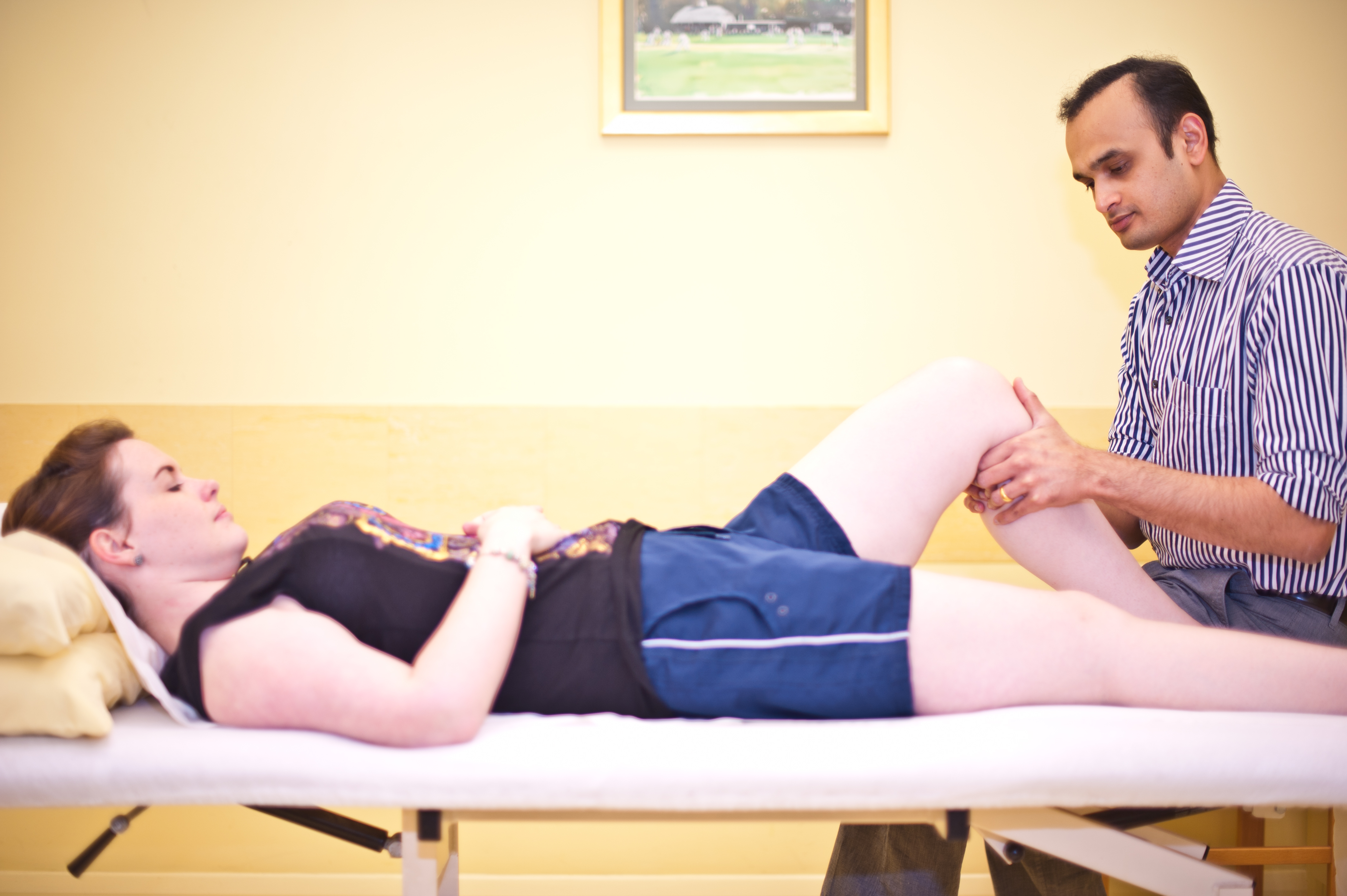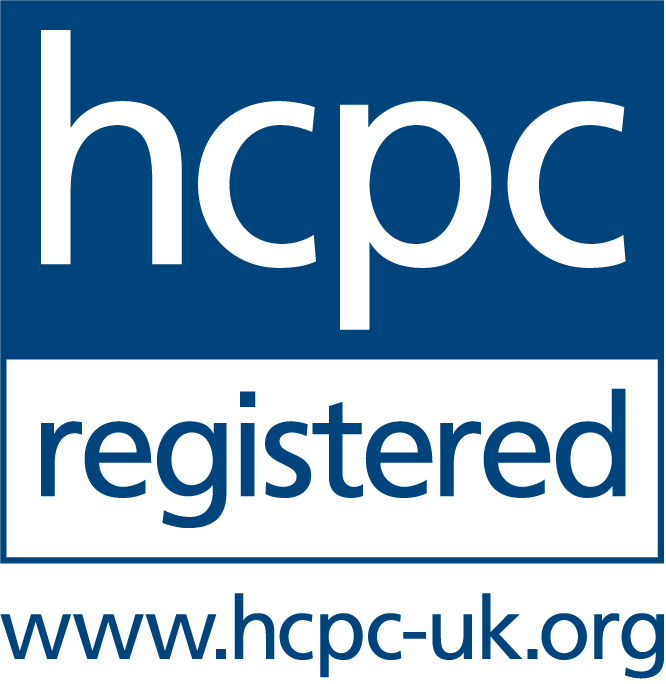Conditions Treated
At Crushes Manor Clinic, our therapists will conduct an initial assessment in order to identify and accurately diagnose your condition. They will then institute a plan in partnership with you that fits with your goals and objectives, so that we can restore and maximise function, alleviate pain and, in certain situations, ensure you have the tools to manage any chronic conditions you may be living with. Our therapists use physical modalities like exercises, manual therapy, manipulation and soft tissue techniques as indicated, along with electrotherapy modalities and acupuncture.
- Headache
- Neck and Shoulder Pain
- Thoracic Outlet Syndrome
- Frozen Shoulder
- Shoulder Impingement
- Tennis Elbow / Golder's Elbow
- Carpal Tunnel Syndrome
- Postural Neck or Back Pain
- Lower Back Pain
- Sciatica and Lower Back Pain
- Trochanteric Busitis / Greater Trochanter Pain Syndrome (Lateral Hip Pain)
- Knee Ligament Injuries
- Ankle Sprains
- Plantar Fascitis / Heel Pain
- Rehabilitation after Surgery
- Rehabilitation after Fractures
- Osteoarthritis
Headache
There are various causes of headaches. In the majority of cases, the cervical spine or neck could be responsible, or affected secondary to the headache. Stress and muscle tightness in the shoulder and neck area are likely to cause pain in the neck, which are all trigger factors for headaches. A detailed assessment assists in targeting treatment to the appropriate area. Appropriate manual therapy, stability exercises and in some cases, acupuncture, can assist greatly in providing relief.
Neck and Shoulder Pain
Neck and shoulder pain radiating to the arm (Radiculopathy), pins and needles or tingling and numbness in the upper arm, forearm or hand could be a result of compression of the nerves that originate in the neck and travel into the arm and hand. An accurate assessment will be conducted by our therapists to ascertain the degree of nerve compression and the most likely site, in order to ensure treatment is most effective to bring about relief.
Thoracic Outlet Syndrome
A compression in the neck and axilla of a collection of nerves and blood vessels called the brachial plexus could result due to postural and other anatomical causes (such as extra ribs and tight muscles). The most common symptoms of TOS are a weakness of the arm and hand, inability to grip objects for prolonged periods and an ache in the arm on prolonged overhead activities. A physiotherapist is able to identify the causes and institute stretching exercises along with manual therapy in order to reduce nerve and vascular (blood vessels) symptoms.
Frozen Shoulder
This is a common shoulder condition that results in significant pain and a loss of movement in the joint. In a minority of individuals, the condition may be secondary to an injury. However, the vast majority of Frozen Shoulders could start without any specific cause. Physiotherapy and associated pain relief strategies assist in timely improvement in movement and a reduction of pain. In some instances, alternative pain relief strategies, such as acupuncture or steroid injections, may be required to gain function and aid recovery. At Crushes Manor Clinic, our physiotherapists would be able to assess the stage of the condition upon which would depend the correct management strategy.
Shoulder Impingement
Another common condition that causes shoulder pain on elevation of the arm. It arises due to swelling under the arch, rotator cuff tendon tears or rotator cuff wear and tear issues. For treatment to be successful, it is necessary to assess the shoulder accurately, as physiotherapists often find that postural or neck problems could contribute to, or be responsible for, some or most of the pain experienced.
Tennis Elbow / Golfer's Elbow
These conditions, which affect the outside and the inside of the elbow respectively, are interesting, as they quite commonly occur in individuals who may not be involved in these sports. Repetitive activities or movements may cause these conditions and a tailored rehabilitation programme assists in improving dysfunction. A detailed assessment of the condition is required as some of the nerves that cross the elbow on the inside and the outside may be compressed as they come down the arm causing pain. In such cases, it is also essential to treat the neck and the associated nerves to improve the condition.
Carpal Tunnel Syndrome
An extremely common condition which causes tingling and pins and needles in the hand along with weakness and difficulty holding or gripping objects. The cause of the problem lies in a small band in the wrist which tightens over a nerve. Our physiotherapists would be able to assess whether the condition has arisen due to a problem in the wrist or if the nerve is compressed in the neck. Successful management of the condition may help to prevent or delay surgery.
Postural Neck or Back Pain
Due to the increased demands of certain occupations (manual and sedentary) and our increasing reliance on computers and tablets along with certain lifestyle factors, musculoskeletal clinicians are encountering an increasing number of individuals with postural spinal pain. Successful management of such issues requires not just physical interventions but in most instances, it means identifying particular postural or physical stressors and working with the individual in order to eliminate or reduce their contribution.
Lower Back Pain
One of the most commonly seen conditions in an orthopaedic or physiotherapy clinic, lower back pain affects 80% of individuals at some point in their lives. There are various reasons cited for lower back pain including posture, prolapsed discs, facet joints and ligaments. In most instances however, it is an understanding of the causative mechanisms, specific exercises and manual therapy that aids recovery.
Sciatica and Lower Back Pain
This is another common condition which arises due to the compression of the sciatic nerve in the lower back. Symptoms of the condition could include pain in the back or the leg, with or without tingling/numbness in one or both legs. In a majority of the cases we see, a combination of manual therapy and specific nerve and mobilising exercises for the back act as a very useful first line of management for the condition.
Trochanteric Busitis Greater Trochanter Pain Syndrome (Lateral Hip Pain)
Pain on the outside of the hip could arise due to a weakness or wear and tear of the muscle and tendon on the outside of the hip joint. Other symptoms could include difficulty and pain on walking and a visible limp. An assessment should identify if the problem lies in the tendon on the outside of the hip or if a nerve from the back is causing the pain, in which case, our physiotherapist will discuss the appropriate management strategies with you and target treatment to the most appropriate area to maximise recovery.
Knee Ligament Injuries
At Crushes Manor Clinic, our physiotherapists specialise in sports injuries. With regards to the knee, these may include the cruciate ligaments, collateral ligaments and the menisci. Physical tests to stress the ligaments are conducted by our physiotherapists to identify whether an isolated ligament or a combination of them are affected. We are also able to guide you regarding the need for further investigations. At the clinic, we work with athletes to come up with a mutually agreed treatment plan, keeping in mind their goals, and target pre-decided return-to-sport dates.
Ankle Sprains
This is a common injury seen in a physiotherapy clinic, which results from twisting the foot either whilst playing sport or walking on uneven terrain. Our physiotherapists will be able to guide you through the acute phase of rehabilitation, ensure you are able to protect the ligament and at the same time, load and exercise the ligament optimally, which is a vital part of managing ligament injuries.
Plantar Fascitis / Heel Pain
This is a condition that makes it difficult to walk due to pain in the heel. A thorough assessment incudes the biomechanics of the foot, lifestyle factors and checking for any muscle tightness in the leg muscles. Rarely, a nerve that travels into the heel from the inside of your ankle and leg could be responsible for the condition which then necessitates treatment of the nerve and the lower back.
Rehabilitation after Surgery
Our physiotherapists work with patients who are recovering from surgeries such as total hip replacements, total knee replacements and total shoulder replacements, to name a few. We are able to use manual therapy, exercise therapy and other electrotherapy equipment as required to reduce pain, improve range and muscle function and optimise recovery. On your initial assessment, our physiotherapist will take a detailed history and endeavour to allay any fears or concerns you have. They will also work with you to outline a treatment plan, which will help streamline treatment goals and objectives.
Rehabilitation after Fractures
Early rehabilitation of fractures assists in maintaining range of motion of the unaffected joints. Advice on mobility using walking aids can help in maintaining independence in daily functional tasks.
Osteoarthritis
Osteoarthritis is a common and normal process that most joints will go through as they progress through life. All of us will experience this process as we go through life although some of us may experience different symptoms from this process depending on a variety of factors. We now offer Hyaluronic Acid injections (Ostenil or Durolane) for Osteoarthritis of the knees, hands, ankles, hips, shoulders.


